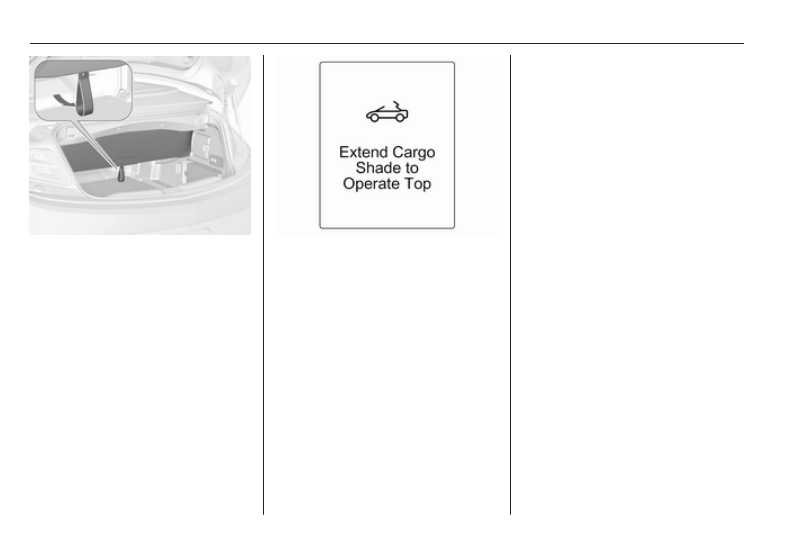Opel Cascada (2017 year). Manual - part 3

38
Keys, doors and windows
● Load compartment partition is
folded out, pass-through flap is
● Soft top lid is engaged in closed
position.
● Boot lid is completely closed.
● Outside temperature is not lower
than -7 °C for opening and
-10 °C for closing.
● Vehicle battery voltage is
sufficient.
● The system is not overloaded by
repeated operation (max. 5
complete cycles in succession).
If any of these requirements are
not fulfilled, a warning chime
sounds and a message appears
in the Driver Information Centre
when the switch is actuated and
the soft top will not open or close.
● There must be no objects in front
of the rear window or in the pivot
area of the soft top and the soft
top lid.
If the automatic drive is not
operational when the soft top is open,
execute a manual closing process,
see the following instructions in
"Manual closing in the event of a
system fault".
General hints
Note
● Always actuate the operation
switch until the acoustic signal
sounds or the hazard warning
flashers illuminate, to ensure that
the soft top is completely opened
or closed.
● The soft top can be held in an
intermediate position to facilitate
cleaning of hood spaces and
gaskets. Release the switch in
the centre console during
operation to stop soft top
movement in intermediate
position for a maximum of
7 minutes when ignition is on.
After this time a warning chime
sounds, the hydraulic pressure in
the system decreases and the
soft top can start to move by
itself.
● Do not open the soft top if it is wet,
frozen or dirty.
● Activating the soft top on uneven
ground can lead to malfunctions
and damage.